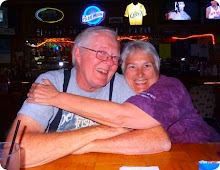Cheyenne, WY High 92 Low 54
National Center for Atmospheric Research
If you have any interest at all in computers or weather, you need to stop at this visitor center. Some of the pictures below were taken from their website.
“This supercomputing center provides advanced computing services to scientists across the nation in a broad range of disciplines, including weather, climate, oceanography, air pollution, space weather, computational science, energy production, and carbon sequestration. It also houses a premier data storage and archival facility that holds, among other scientific data, unique historical climate records.”
I will be the first to admit that I do not understand computers or the weather but I found this place fascinating. And some of the exhibits were simple enough for even me to understand.

The visitor center area isn’t large but the size of their computer certainly is.
Scientists from all over the world can make use of this computer to help them predict weather patterns as well as climate changes
This is it – Yellowstone!!!
NWSC (NCAR-Wyoming Supercomputing Center) named their first supercomputer Yellowstone after the world’s first national park and in honor of Wyoming’s important role in making the NWSC a reality.
This machine is capable of 1.5 quadrillion calculations per second – or, in computing terms. 1.5 petaflops. FLOPS stands for “floating point operations per second.”
These are just a few of the air filters used in cooling the computers. They are located on the floor below Yellowstone. They recycle the heat from the computer to heat the floors and the sidewalks of their facility. Then they vent in the winds of Wyoming to help with the cooling system.
How long do you think it would take for you to count to 1.5 quadrillion? Answer: If you counted one number per second without a break, it would take you well over 47 million years to count that high.
NCAR’s first supercomputer, known as the Cray-1A, was acquired in 1977. Each replacement has been many times more powerful than its predecessor. Computer technology has historically doubled in power about every 18 months.
Touring NCAR’s Boulder, CO operation has moved a whole lot closer to the top of my bucket list.
Please visit their website at: http://nwsc.ucar.edu/ and read their frequently asked questions for really great information.








Boggles the mind! Did you ask them to balance your check book while you were there?
ReplyDeleteWow I would never have thought to tour a place like that. but it draws my interest now.
ReplyDeleteMaybe they could help plan our trip back east. That way we would have good weather all the way!
ReplyDeleteHow interesting...I would have never thought about a tour like that. Computers change so rapidly. About the time I get everything figured out, it seems I have to start over!
ReplyDeleteThis is definitely the technology age and it does keep aging or is that improving?
ReplyDeleteI'd love to take that tour for sure! A pretty impressive computer center for weather forecasts.
ReplyDeleteMy weather forecast consists of looking out the window to see what's happening.
I know I'm supposed to understand this stuff, but I'm still learning my way around counting on my fingers...
ReplyDeleteAll those electrons make be giddy:)
ReplyDeleteI will add this to my bucket list. I spent most of my career working on computers from the IBM-650 to IBM 370 computers, Minicomputers and everything in between. The changes I have personally seen since 1960 has been fantastic.
ReplyDeleteSorry to hear about your hail. Hope all worked out for you. We dodged a bullet here in Charlotte, NC area tonight, but all is well.
What an interesting tour of a "lesser know" place. I'd like to visit someday!
ReplyDeleteFascinating stuff.
ReplyDelete